- Home
- Military & Defense
- Incredible photos from the Korean War campaign that showed what the US Marine Corps is made of
Incredible photos from the Korean War campaign that showed what the US Marine Corps is made of
By the middle of 1950, the Korean War seemed all but won. The communist Korean People's Army was routed and UN forces were quickly advancing up through the northern half of the Korean Peninsula

Then, on October 19, 1950, Chinese leader Mao Tze Tung secretly sent large formations of troops into North Korea in an attempt to rescue the communist war effort.
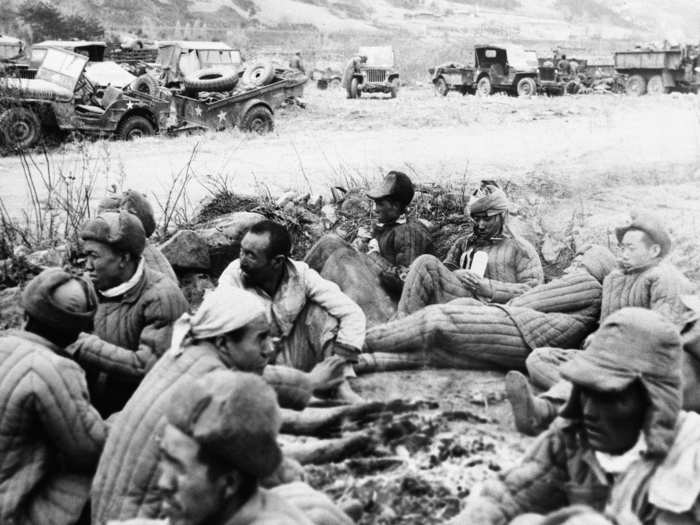
On November 2, Chinese forces encountered US Marines. The Chinese suffered heavy casualties and withdrew to the Chosin Reservoir in an attempt to lure allied forces into a trap.
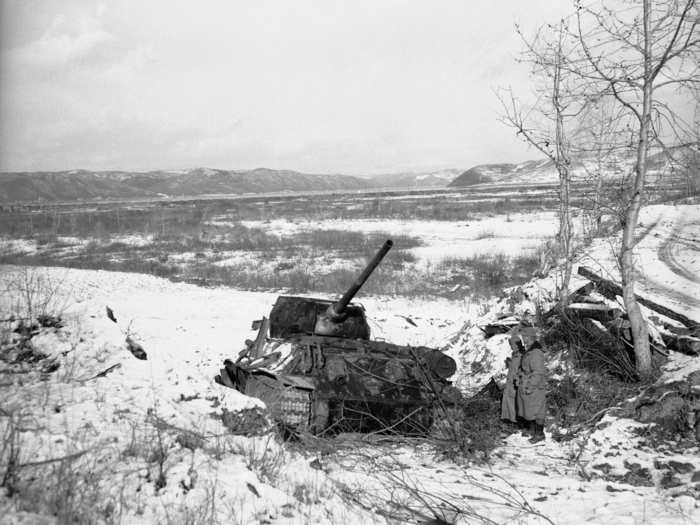
US and UN forces pursued the Chinese, and established themselves in the Chosin Reservoir area.
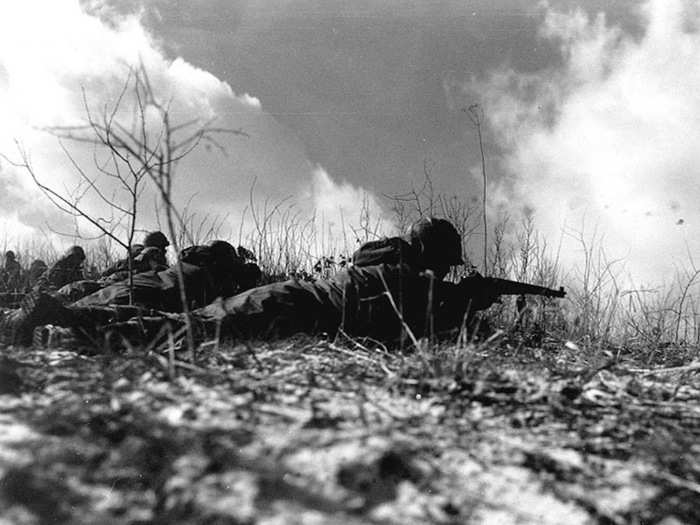
The Chosin Reservoir is in the northeast of North Korea's present-day borders, and only 70 miles from the Chinese border, and 50 miles from the Sea of Japan.
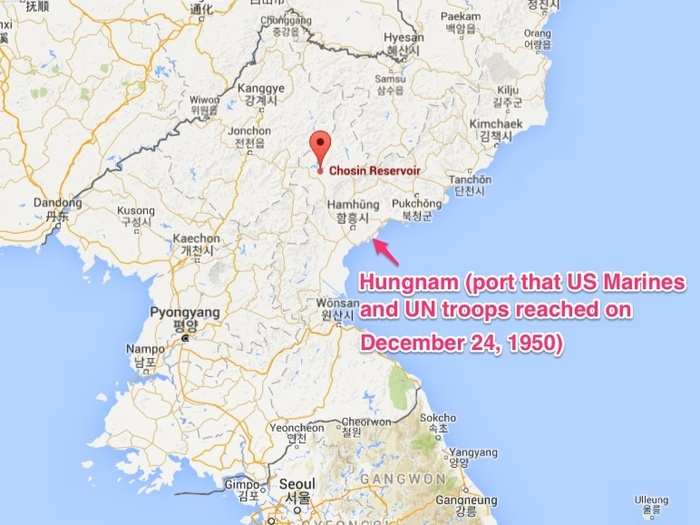
The 30,000 UN troops were quickly surrounded and overwhelmed by a Chinese force lying in wait — an army somewhere between 67,000 and 120,000 strong.
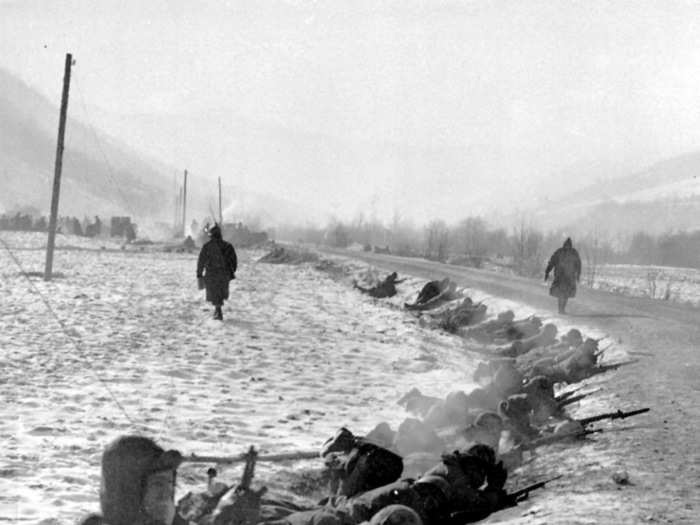
As this map demonstrates, the Marines were in a potentially disastrous position during the opening days of the battle, Chinese forces attacking from every side.
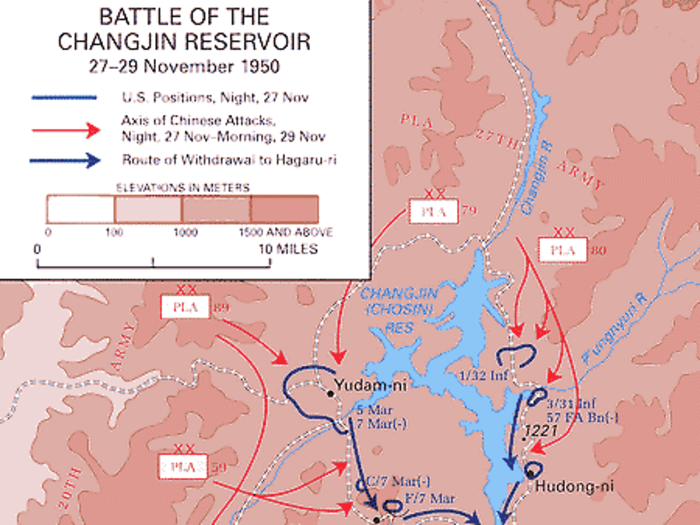
But the Marines pushed towards the enemy position. Overwhelmed and caught off guard, General Douglas MacArthur had ordered the Home-by-Christmas Offensive ...
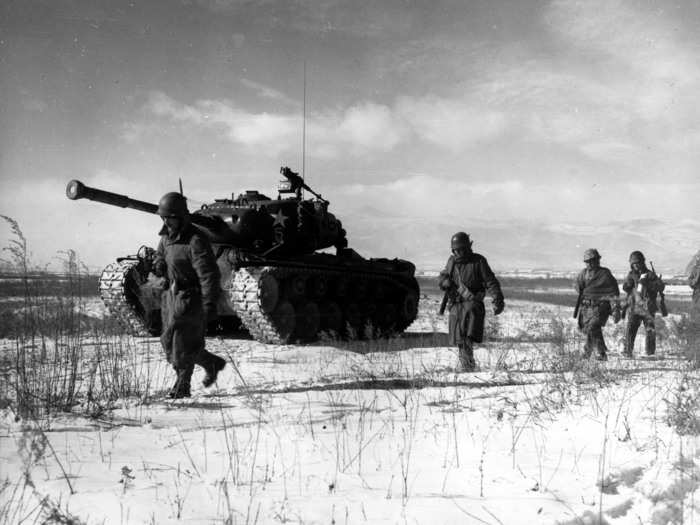
... which had the express goal of evicting Chinese forces from northern Korea and ending the war for good. The offensive was undertaken between November 25 and December 2, 1950.
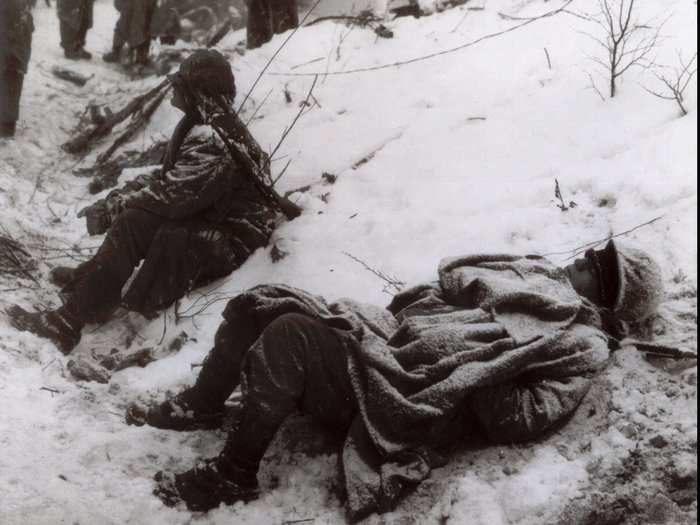
The offensive instead ended in a decisive Chinese victory that broke the UN army's cohesion and forced it to withdraw towards the 38th parallel.
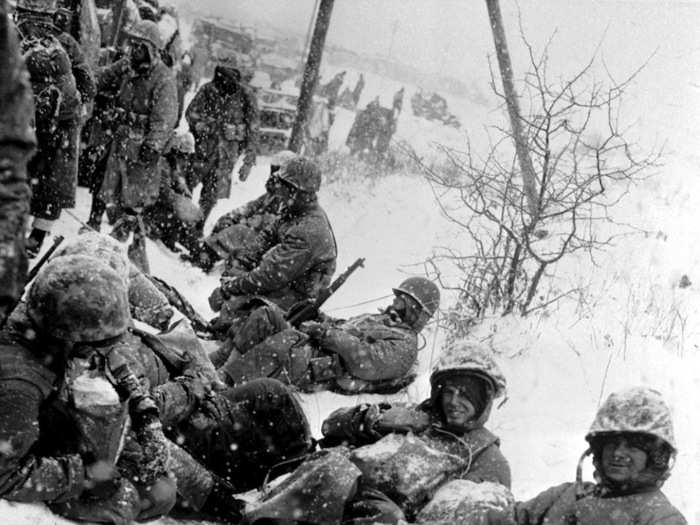
With the allies surrounded by Chinese forces, the remainder of the Chosin campaign was aimed at preserving the UN's army against a massive enemy onslaught.
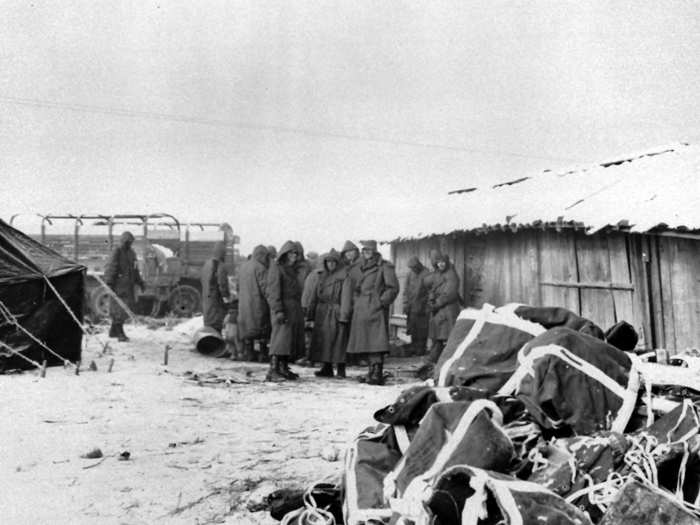
The ultimate destination for the retreating UN forces was the northern Korean port of Hungnam.
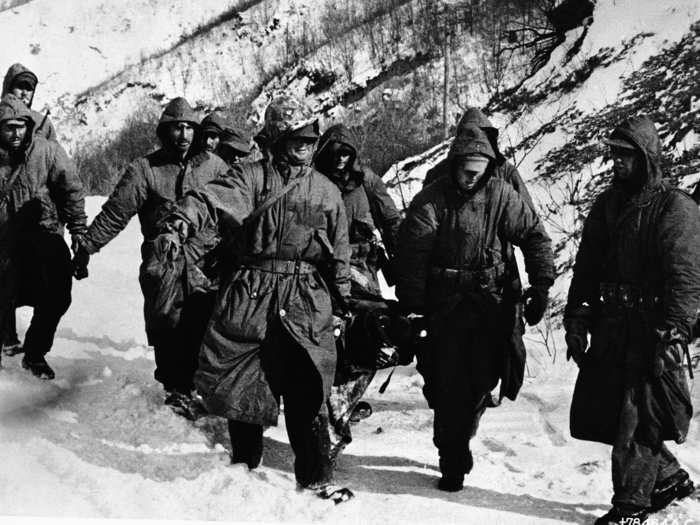
To reach the port, UN forces had to cross some of the most treacherous terrain in all of Korea.
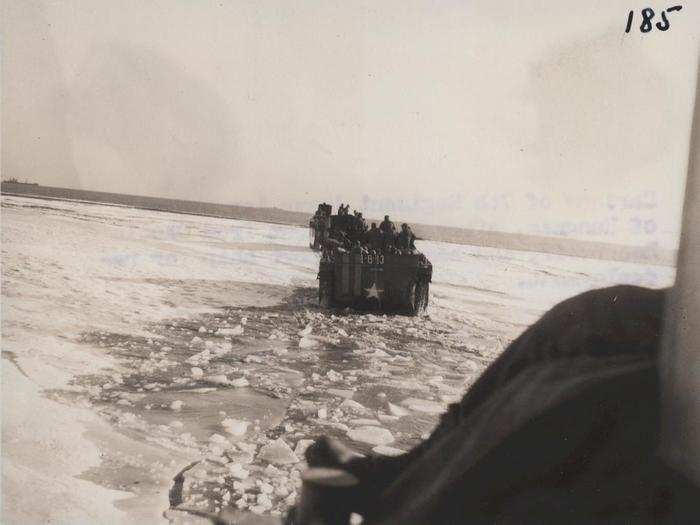
Mountain passes along the retreat were at times only wide enough for a single vehicle. Extreme temperatures and exposure caused 7,338 frostbite casualties.
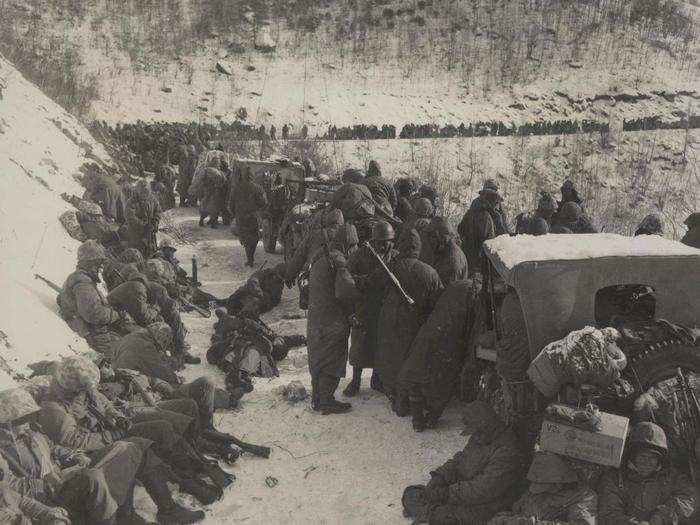
Overall, there were an estimated 17,000 UN casualties in the campaign. The Chinese suffered over 40,000 casualties.
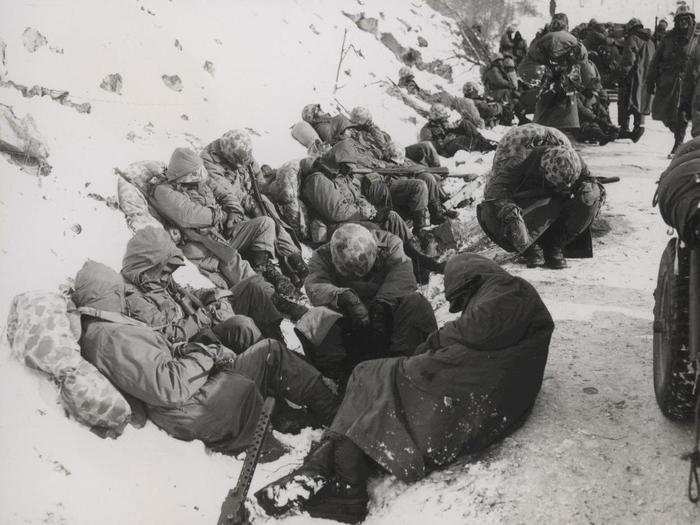
Still, the UN forces reached Hungnam by December 24. A 193-ship armada evacuated the soldiers, along with 98,000 refugees that the UN and Marines Corps troops protected on the long march to the sea. After the evacuation, the US destroyed the port to deny the Chinese access to it. The Korean War wouldn't end until July of 1950, and although the US prevented the communists from dominating the south of the peninsula, Korea remains divided to this day.
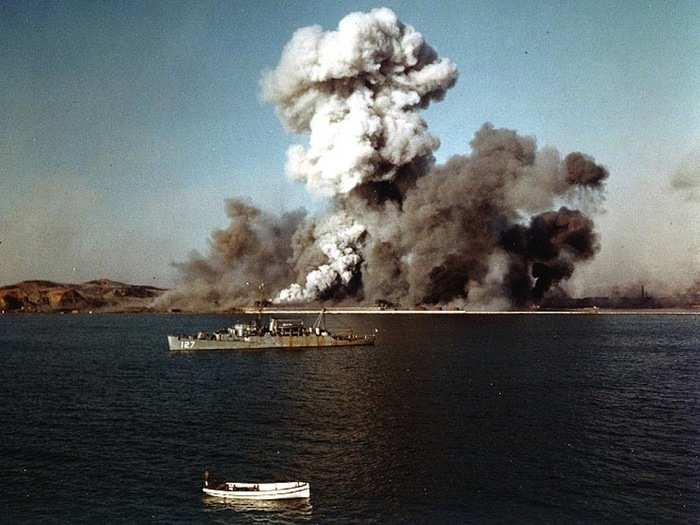
Popular Right Now
Advertisement